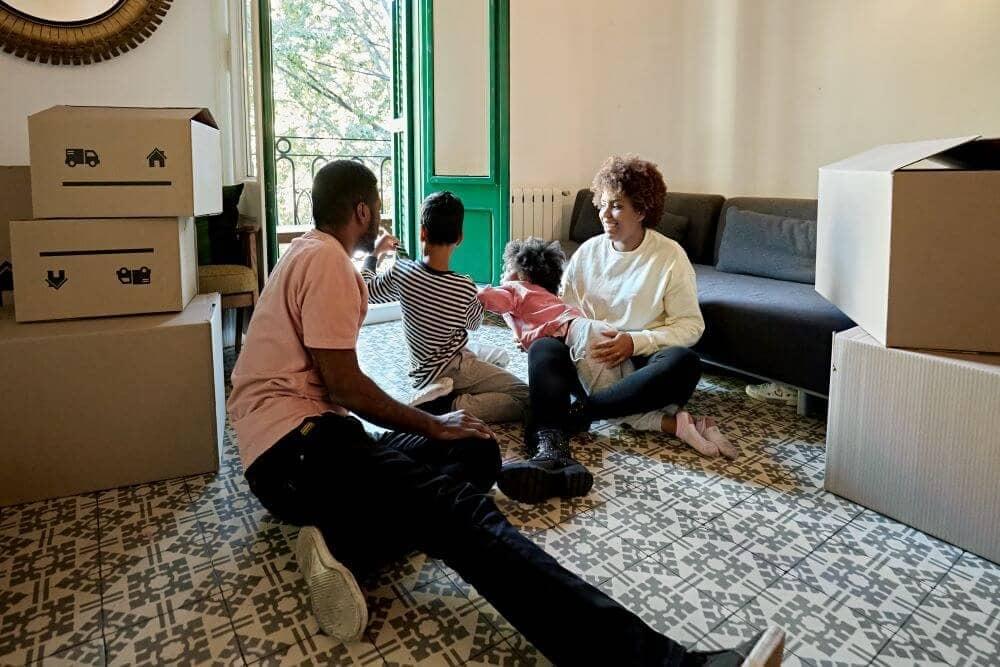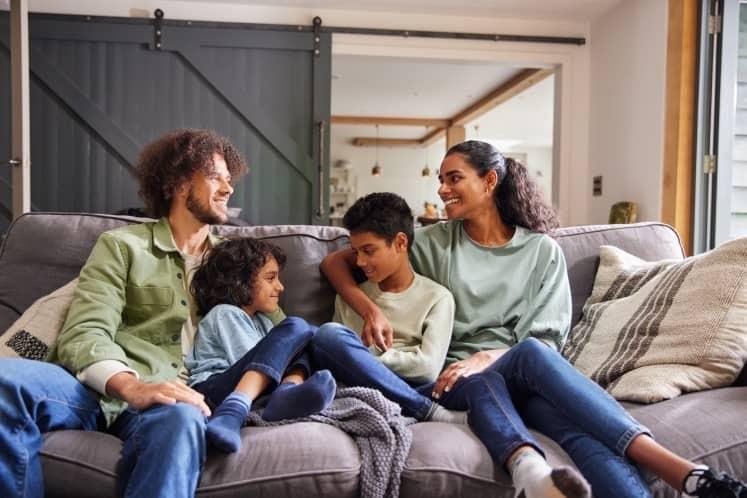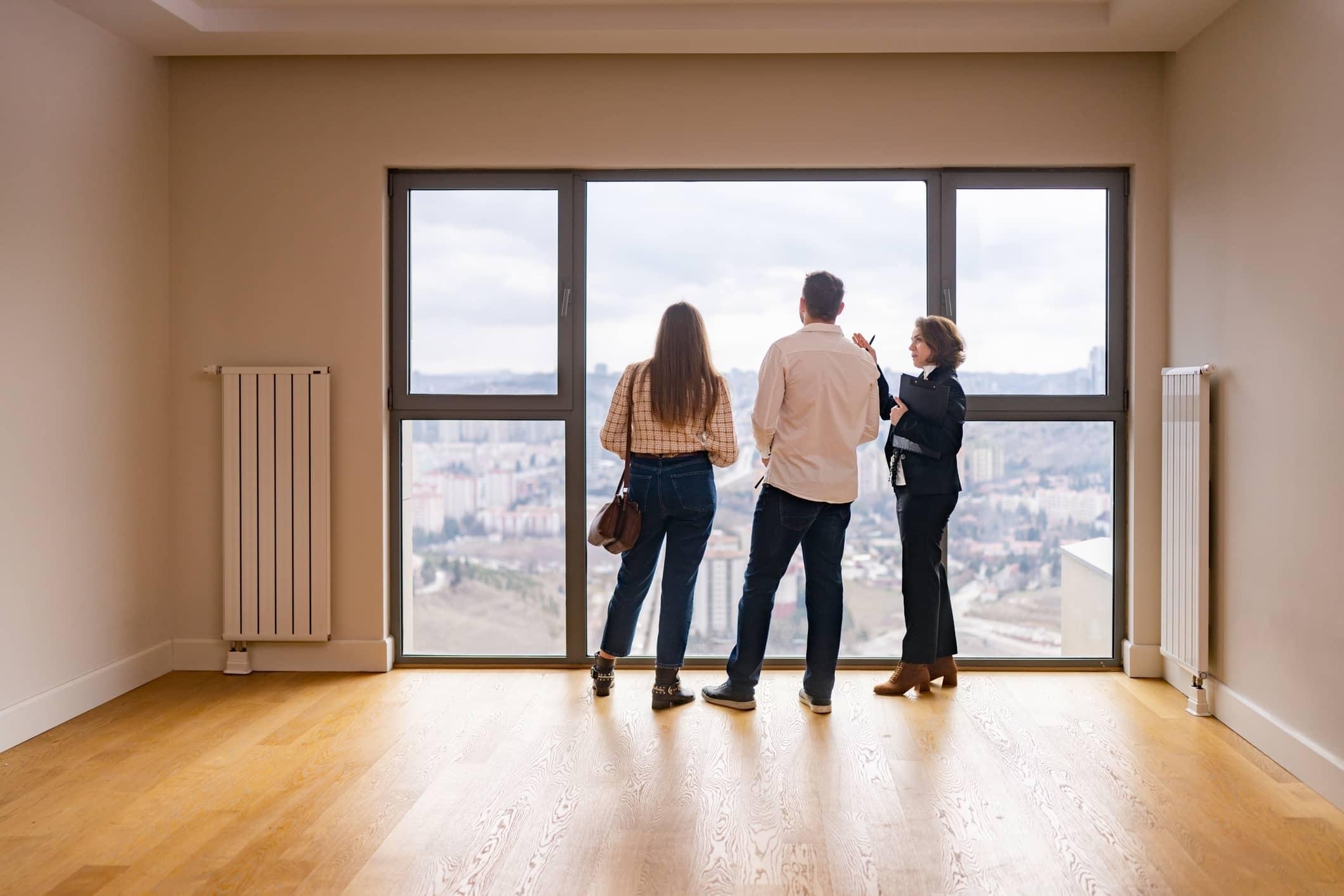What is the Average Down Payment on a House?


Buying a home is an exciting milestone, but figuring out how much you need for a down payment can feel a bit overwhelming. The good news? You don’t have to navigate it alone.
This guide will break down everything you need to know about the average down payment on a house—from what you might expect to pay nationally to how your unique circumstances, like location and loan type, can impact your final amount.
If you're curious about how different loan options might affect your down payment, loan amount, and mortgage rates, check out our Digital Mortgage application for personalized guidance.
What is a Down Payment on a House?
A down payment is the upfront cash you contribute when purchasing a new home. It’s usually expressed as a percentage of the home’s purchase price and represents your initial ownership stake in the property.
This amount reduces the lender’s risk, which can lead to more favorable loan terms, such as lower interest rates and better loan options.
The Average Down Payment on a House in 2024
In 2024, the median down payment for homeowners is about 12%. First home buyers typically contribute 8%, while repeat buyers tend to put down around 16%.
These numbers reflect a shift from past decades when down payments were significantly higher. For example, in 2006, the median down payment was about 20% and is now down to around 3%.
This growing trend of low down payment options is largely due to the availability of more accessible buyer programs and loan types, making it easier for first-time buyers to enter the housing market.
How Much Should You Save for a Down Payment on Your First Home?
Roughly 35% of buyers believe they need between 16% to 20% down for a mortgage loan. However, according to the National Association of Realtors (NAR), smaller down payments are more common and accepted by some of the most known mortgage lenders.
Average Down Payment by State and Age
The average down payment for Americans varies significantly across the United States based on regional housing costs and local market conditions.
For example, in the Northeast, where home prices are generally higher, the average down payment tends to be around $65,880. In contrast, in the Midwest, where housing is more affordable, the average down payment is approximately $42,765.
What Is the Average Down Payment on a House in Texas?
Despite Texas’ larger-than-life reputation, the average down payment homebuyers typically put down is modest, ranging from 5% to 6%. This percentage reflects Texas's relatively affordable home prices compared to other states.
Average Down Payment to Afford a House in California?
In contrast, California’s soaring real estate prices push the average down payment closer to 12%. In high-demand areas, buyers often need to put down even more due to competition and the frequent use of jumbo loans, which require higher down payments.
Down Payment by Age
Younger buyers, especially first-time homebuyers, often put down smaller amounts—typically around 8% to 10% of the home’s purchase price—due to lower savings and higher entry costs.
This is a reflection of their financial stage in life. Older buyers, on the other hand, may put down closer to 16% or more for a home loan, thanks to savings or home equity from selling a previous home.
Typical Down Payment Percentages and Amount Per Home Price
Down payment percentages can vary widely based on your financial situation, the type of mortgage, and personal preferences. Here’s a breakdown of typical down payment percentages:
3% Down Payment
This is often the minimum for conventional loans, but it usually comes with the requirement of Private Mortgage Insurance (PMI). Home prices typically range between $200,000 - $300,000 with the average downpayment amount between $6,000 to $60,000.
5% Down Payment
Slightly higher than 3%, but still requiring PMI. Home prices are typically around $400,000 with the average down payment amount between $20,000 to $80,000.
Can You Buy a House with a 5% Down Payment?
Yes, you can. Many buyers, especially first-time buyers, opt for the 5% down payment. However, the eligibility criteria for making a 5% down payment depends on the loan type and your unique financial profile, and can increase your monthly mortgage payment.
10% Down Payment
With 10%, you still pay PMI but may get better loan terms. Home prices typically range between $500,000 - $600,000 with the average down payment amount between $50,000 to $120,000.
Is 10% Down Payment on a House Good?
A 10% down payment is a good middle ground for many buyers. It offers some of the benefits of a larger down payment, such as lower monthly payments, while still allowing buyers to maintain some liquidity. However, you’ll still need to pay PMI, unlike with a 20% down payment.
20% Down Payment
The gold standard for avoiding PMI and securing favorable interest rates. Home prices are typically around $700,000 with the average down payment amount being around $150,000 or more.
If you’re looking for a clearer down payment average for different home prices, you can use our home affordability calculator to help you gauge what you might be able to afford.
Is It Necessary to Put 20% Down?
While a 20% down payment offers benefits like avoiding PMI, it’s not necessary for most homebuyers, thanks to the availability of loans like FHA, VA, and USDA that require much less.
Minimum Down Payment Requirements by Loan Type
Different loan programs have varying minimum down payment requirements. Here’s a look at the options available:
Conventional Loan
Conventional mortgages typically require a minimum down payment option of 3% to 5%, depending on the lender and borrower’s financial profile.
FHA Loan
The Federal Housing Administration offers FHA loans, which typically require a 3.5% down payment option, making them a good option for buyers with less savings or lower credit scores but are still eager to join the homebuying process.
VA Loan
Veterans and active-duty military members—this one's for you. VA loans, which are backed by the Department of Veterans Affairs, require no down payment at all.
USDA Loan
If you’re buying in a rural area, the USDA loan program offers another zero down payment option.
Like VA loans, USDA loans are backed by the government, but they’re designed to encourage homeownership in less densely populated areas, such as rural Washington and Hawaii.
Down Payment Amount by Purchase Price
Down payment amounts can change based on home purchase prices and different percentage rates (3%, 5%, 10%, and 20%).
The graph illustrates how, as the home price increases from $100,000 to $500,000, the down payment requirement also rises significantly for each percentage. For example, a 5% down payment on a $200,000 home is $10,000, while it’s $25,000 on a $500,000 home.

Is $10,000 a Good Down Payment on a House?
Whether $10,000 is enough for a down payment depends on the home’s purchase price. For a $300,000 house, it would only cover a 3% down payment. However, for a $100,000 home, it’s a substantial 10% down payment.
One pro of using $10,000 for a down payment includes being able to enter the housing market as soon as you have this amount, but the cons may include higher monthly payments due to PMI.
How Much of a Down Payment Do You Need for a $300,000 House?
For a $300,000 house, a 3% down payment is $9,000, 10% is $30,000, and a 20% down payment is $60,000.
The ideal amount depends on your loan type, affordability, and financial goals, as each down payment percentage impacts your monthly payments and total loan cost differently.
How to Save for a Down Payment
Saving for a down payment can feel daunting, but breaking it down into manageable steps can make it easier:
Determine Your Down Payment Goal
Start by researching home prices in your desired area. Set a realistic goal based on whether you’re aiming for a 3%, 5%, 10%, or 20% down payment.
Reduce Debt-to-Income Ratio
Lowering your debt to income ratio allows you to save more for a down payment.
Pay off high-interest debts first, avoid new loans, increase your income with side gigs or a raise, and consider consolidating multiple loans into one with a lower interest rate to reduce monthly payments.
Increase Your Savings
Increasing your savings is a key aspect of personal finance management. Even small amounts of savings add up over time and by using savvy automations, you can take the decision-making out of the equation.
Consider Gift Funds or Assistance Programs
If saving for a down payment feels out of reach, consider using gift funds from family or explore down payment assistance programs.
Down Payment Assistance Programs
Down payment assistance programs can be a lifeline for buyers who are struggling to save for a home. These programs are typically aimed at first-time buyers, but some are available to repeat buyers as well.
Assistance can come in the form of grants, mortgage programs, forgivable loans, or deferred-payment loans.
Understanding these options and individual eligibility criteria can help buyers select the right assistance based on their unique financial situation and loan limits.
OneDown from Rate:
In our OneDown program, we offer a reduced mortgage rate if you can come up with a minimal down payment, sometimes as low as 1%. This can make homeownership more accessible by lowering your monthly mortgage payments.
Grants:
Free money that does not need to be repaid. Grants can help reduce upfront costs, including the down payment and closing costs.
Forgivable Loans:
Loans that don’t need to be repaid if you meet certain conditions, such as staying in the home for a specified number of years or maintaining the home’s value.
Deferred-Payment Loans:
Loans where repayment is delayed until the home is sold or refinanced. This option allows you to prioritize other financial obligations, such as paying off student loans or reducing other debts.
Benefits and Drawbacks of Larger Down Payments
Making a larger down payment comes with several benefits but also has some drawbacks:
Benefits
A larger down payment of 20% or more helps you avoid private mortgage insurance (PMI), reduces your monthly payments, and secures better interest rates, saving you money over the loan’s lifetime.
Drawbacks
The biggest drawback is the hit to your liquidity. Tying up a significant portion of your cash in a home means you might have less flexibility for emergencies, home repairs, or even lifestyle choices like travel or investing.
It also takes longer to save a large down payment, which could delay your plans to purchase a home.
Start Your Home Buying Journey Today
Ready to take the next step?
Understanding the average down payment is just the beginning. Whether you’re a first-time homebuyer or looking to move up, knowing your options can help you plan with confidence.
Check out Rate’s Digital Mortgage application to explore tailored loan options that fit your financial situation and homeownership goals.
Get personalized rate quotes, see how different down payment amounts impact your mortgage terms, and connect with our experienced loan officers for expert guidance every step of the way!
Guaranteed Rate, Inc. is a private corporation organized under the laws of the State of Delaware. It has no affiliation with the US Department of Housing and Urban Development, the US Department of Veterans Affairs, the US Department of Agriculture, or any other government agency.




